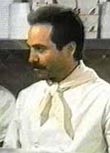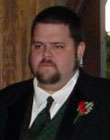|
|
 
|
|
Author
|
Topic: A 3-D Maven Weighs In
|
System Notices
Forum Watchdog / Soup Nazi

Posts: 215
Registered: Apr 2004
|
 posted 07-14-2011 05:11 PM
posted 07-14-2011 05:11 PM


A 3-D Maven Weighs In
Source: Wall Street Journal
quote:
Over the course of several decades, Lenny Lipton, a prolific inventor of 3-D technology and the founder of StereoGraphics Corp., has had a front-row seat at the evolution of 3-D theatrical films. He has racked up more than 50 patents (including one as "Lenny Liptoh") in or related to the field, and believes that unlike the short-lived boom of the 1950s, today's 3-D movement—which extends beyond films to television programming and channels, video games and mobile devices—is here to stay.
View Full Image
cclipton
Randy Jones
cclipton
cclipton
But while excitement for stereoscopic content is building overall, the format is at a crossroads as far as some movie audiences are concerned. "The 3-D boom of the 1950s was a true boom because for a couple of years, you had 50 or 60 3-D pictures of good and bad quality being released," Mr. Lipton, 71, recently recalled from his home here. "In the early 1980s, you had maybe a handful of 3-D films released, but they were stinkers. Now we're back to the usual mix of good and bad 3-D films, but audiences are raising questions about the format."
Modern 3-D films typically carry a ticket surcharge of $2 to $4 and are increasingly being rejected by U.S. movie-goers in favor of 2-D films. Ticket sales for 3-D showings of movies like "Green Lantern" and "Cars 2" are only 40% to 45% of domestic box office, compared with higher percentages in years past. With the summer halfway over, film-industry and movie-theater executives are closely monitoring the performance of such 3-D releases as Friday's "Harry Potter and the Deathly Hallows, Part II"—not to mention such holiday releases as Martin Scorsese's "Hugo" and Steven Spielberg's "The Adventures of TinTin"—to gauge the format's popularity.
"My expertise is more on the technology than the business side, but it seems to me that if you're going to charge people more money to see a 3-D movie, you better deliver or people will become especially disappointed, because they've spent a premium," Mr. Lipton says. "At the creative end, you've got a lot of people who are learning how to use the medium. In the next three years, it won't cost very much more to make a 3-D movie than a 2-D movie and people will learn and the technology will advance."
Mr. Lipton first became intrigued by the concept of stereoscopic, or three-dimensional, imagery when growing up in post-World War II New York. As a boy he often accompanied his mother to the Brooklyn Paramount and other neighborhood movie palaces to bask in the majesty of the elaborately decorated lobbies and Golden Era films that were shown.
"The movie palaces were the closest thing we had to royalty or nobility," Mr. Lipton recently recalled. "It was wonderful—and then suddenly it was 3-D."
It wasn't long before Mr. Lipton began drawing 3-D comic books with red and green crayons on tracing paper, constructing lenses from cardboard tubes and magnifying glasses, and building projectors to have shows for other kids in his neighborhood. His interest continued at Cornell University, where he majored in physics and wrote what he calls his equivalent of a MacArthur "genius" grant: the words to what would become the popular Peter, Paul and Mary song, "Puff the Magic Dragon." Thus blessed with financial security, Mr. Lipton became a filmmaker, author and stereoscopic inventor.
One thing turning off today's 3-D movie audiences, Mr. Lipton says, is projection quality. Films can often appear darker than their 2-D counterparts thanks to the type of 3-D eyewear being worn, the use of the wrong equipment for a specific theater, or the age of the projector's light source. "Lamps and digital projectors are very costly," Mr. Lipton explained. So after the lamps start to get dim, theater owners have "a temptation to use them past their rated life."
The brightness issue did not exist in the '50s, Mr. Lipton says, because "the theaters were using two projectors" to display the 3-D images, one for each eye, "and that immediately doubled the brightness." Also, he says, "the screens were smaller." The problem back then, he says, "was getting the two projectors to run like one—it was just beyond a projectionist's ability." (Modern 3-D systems use a single digital projector that quickly alternates between images seen by the left and right eyes.)
"Another thing people talk about nowadays is movies that are converted from 2-D to 3-D," he says. "Well, sometimes the 3-D conversion houses do a good job and everything looks just fine, and sometimes they don't."
When it comes to conversions, the most important thing there, he says, "is the expertise of the conversion house and the eyeballs of the stereographer" managing the 3-D look. Another factor is the final cut. "You've got a lot of processes going on in order to make the images look right, so if you recut the movie in the week or so before release—which does happen—then you may be throwing out shots that took a lot of effort and you don't always have time to finish the new shots," he says. However, he adds, there are also movies that are shot in 3-D that haven't come out well. He says that from a 3-D perspective, Disney's latest "Pirates of the Caribbean" film "looked mediocre" and that its "Tron Legacy," "was just a terrible job of stereoscopic filmmaking," even though it made a lot of money. "But the same studio also produced a beautiful, veritable stereoscopic masterpiece, 'Tangled,' so you never know."
In terms of content, Mr. Lipton—after offering the caveat that "most" movies "fail and most of them aren't any good. 3-D is not going to help that"—noted that 3-D remains a cinematic genre largely "for younger people, much like horror and science fiction is."
"The first modern 3-D movie was 'Chicken Little' [from 2005], and that's really a terrible-looking film in terms of its stereoscopic aspect," Mr. Lipton says. "But very rapidly, Disney, and then Pixar and Sony Pictures Imageworks began to turn out really excellent, terrific 3-D movies. So we've seen a progression of the stereoscopic cinema evolve from just being movies for little kids to being for an older demographic. . . . That may be part of the attendance issues, because older people may be a more discerning crowd that expects more than kids do."
As Hollywood wrestles with the 3-D theatrical experience, Mr. Lipton says that he's paying attention to the development of new 3-D cameras. Current 3-D movies are shot by two cameras. "Getting those two devices to work like one is a big pain, and also the devices are klutzy," he says. He'd like to see the development of a proper stereoscopic camera that had the look and feel of a typical production camera. "Then you wouldn't have another three or four extra people on the set, which is what makes a lot of production more costly and slows down the process," he says.
He notes that most new televisions soon will have 3-D capabilities built in. And Mr. Lipton is even working on a deep-sea show demo for a 3-D TV network with noted marine photographer Bob Talbot. "My group is trying to get a bunch of TV shows started because the 3-D television networks have no content," he said.
He also has high hopes for 3-D tablets, which he said may be the "hottest thing for stereoscopic imaging that ever happened." He added, "I don't think anybody ever planned it that way, but the stereoscopic image will be beautiful, if it's as good as what I've seen at the tradeshows."
"I can hardly wait," he concluded. "It will be really fun."
Ms. Kung writes about arts and entertainment for the Journal and co-produces the Speakeasy blog.
| IP: Logged
|
|
|
|
|
|
|
|
|
|
|
|
|
|
All times are Central (GMT -6:00)
|
|
Powered by Infopop Corporation
UBB.classicTM
6.3.1.2
The Film-Tech Forums are designed for various members related to the cinema industry to express their opinions, viewpoints and testimonials on various products, services and events based upon speculation, personal knowledge and factual information through use, therefore all views represented here allow no liability upon the publishers of this web site and the owners of said views assume no liability for any ill will resulting from these postings. The posts made here are for educational as well as entertainment purposes and as such anyone viewing this portion of the website must accept these views as statements of the author of that opinion
and agrees to release the authors from any and all liability.
|

 Home
Home
 Products
Products
 Store
Store
 Forum
Forum
 Warehouse
Warehouse
 Contact Us
Contact Us




 Printer-friendly view of this topic
Printer-friendly view of this topic









![[Smile]](smile.gif)




